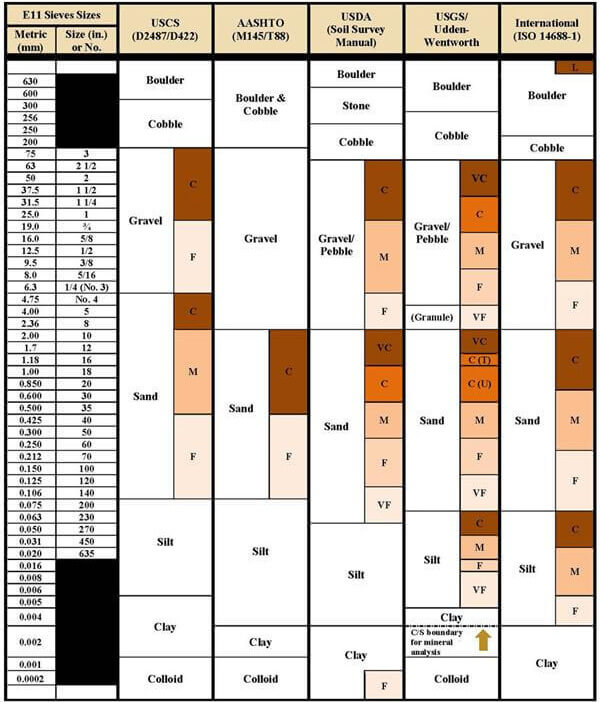


This sampling, classification, and testing program provide answers for geotechnical engineers to determine the soils' suitability for the proposed use. The first steps of design for nearly all engineered construction projects require exploratory sampling, testing, and analysis of soil and rock materials. Why is Soil Important to Civil Engineers? Their systems for classification of soils permit a universal design "language" for foundation and pavement designs. Geotechnical engineers are most interested in how soils will respond to physical forces imposed by structures, roads, and bridges, or artificial earthworks like dams and levees. The focus for each field is slightly different, and all have evolved in different directions. The disciplines of agriculture, soil science, geology, and civil or geotechnical engineering all have interests in evaluating soil properties. The complete classification is A-7-6(20), which indicates a poor quality soil for highway construction.Classification of Soils in Civil Engineering The group index is calculated as follows: Entering the coordinates (60, 32) on the AASHTO plasticity chart, the classification To classify the soil in the AASHTO system, one notes that more than 35% passes the No. The coordinates (60, 32) plot in the CH region, so the soil is a high-plasticity clay (CH). 200 sieve, the soil is fine grained and the plasticity chart is used. As more than 50% of the sample passes the Example 15.3Ī fine-grained soil has the following properties:įirst the soil is classified according to the unified system. This is rounded to the nearest whole number, 2, and the soil classification is reported as A-2-4(2). Where F = 20, the percent passing the No. The soil passes the criteria for A-2-4 and is so classified. 40 sieve, and group A-3 is eliminated due to too much material passing the No. Following the classification table from left to right, group A-1 is eliminated due to too much material passing the No. Next the soil is classified according to the AASHTO system. As this plots in the CL region, the fines are clay and the soil is a clayey sand SC. The plasticity index is calculated as 30 20 = 10, and the coordinates LL = 30, PI = 10 are entered on the plasticity chart. 200 sieve is greater than 12%, the gradation characteristics are not considered, and the Atterberg limits are examined to determine whether the sand is a clayey sand or silty sand.

4 sieve, so the soil is sand (first letter S).Īs the percentage passing the No. All of the coarse fraction is smaller than the No. As only 20% of the soil is smaller than a No. The following data are obtained:įirst the soil is classified by the Unified Soil Classification System. The liquid limit and plastic limit are found The soil meets the classification criteria for A-1-b and is so classified.Ĭlassify the soil represented by the dashed curve in Fig. 10 and that classification permits a maximum of 50%. Proceeding from left to right on the classification chart, the soil cannot be classified as A-1-a because the soil has 70% passing the No. In the AASHTO system the soil is 30% gravel, 47% coarse sand, 19% fine sand, and 4% silt-clay. As the coefficient of uniformity is greater than 6.0 and the coefficient of curvature is between 1 and 3, the soil meets both of the criteria for SW and is so classified. As there is more sand than gravel, the soil is a sand and the first letter is S.Īs less than 5% passes the No. 4 sieve) and 86% being sand (the difference between the Nos. The coarse fraction makes up 96% of the soil, with 10% being gravel (larger than the No. To classify the soil in the Unified Soil Classification System, the percent passing the No. Classify the soil shown by the solid curve in Fig.


 0 kommentar(er)
0 kommentar(er)
